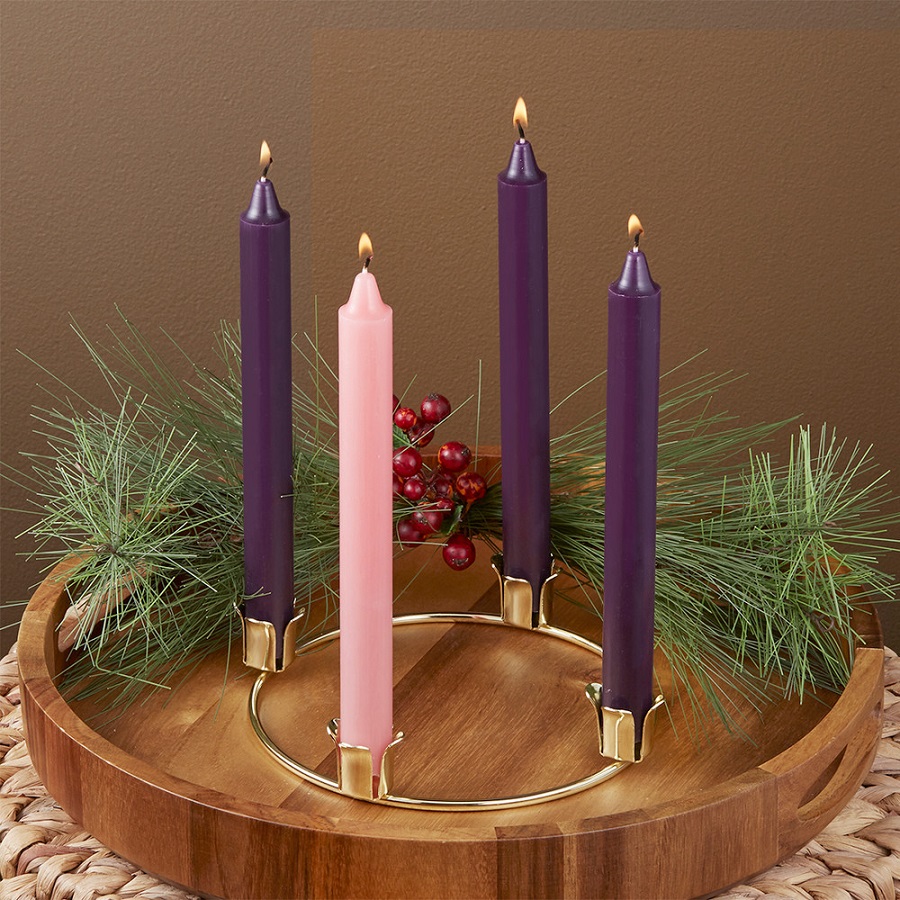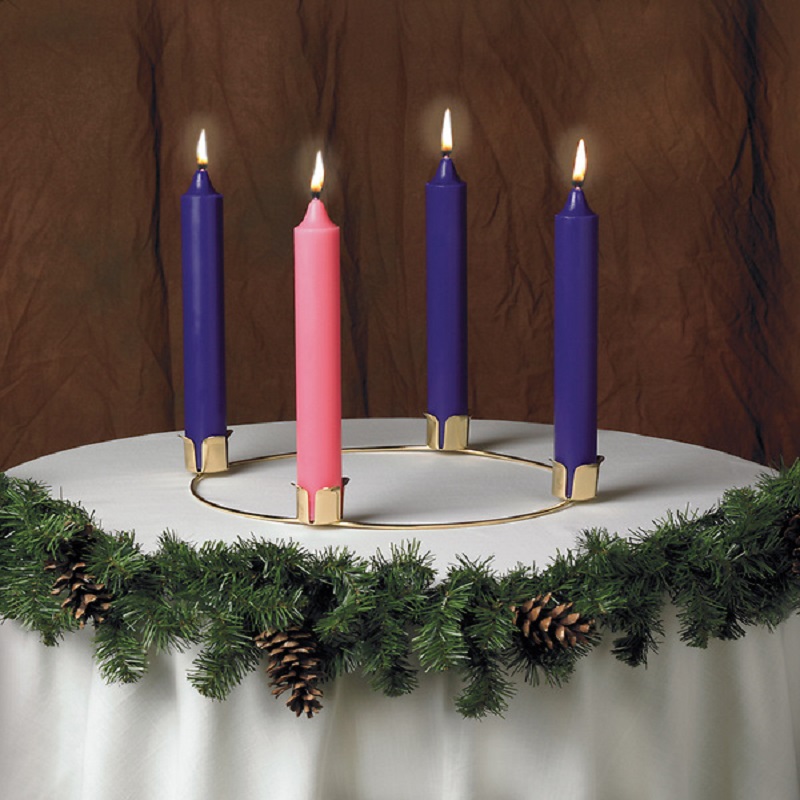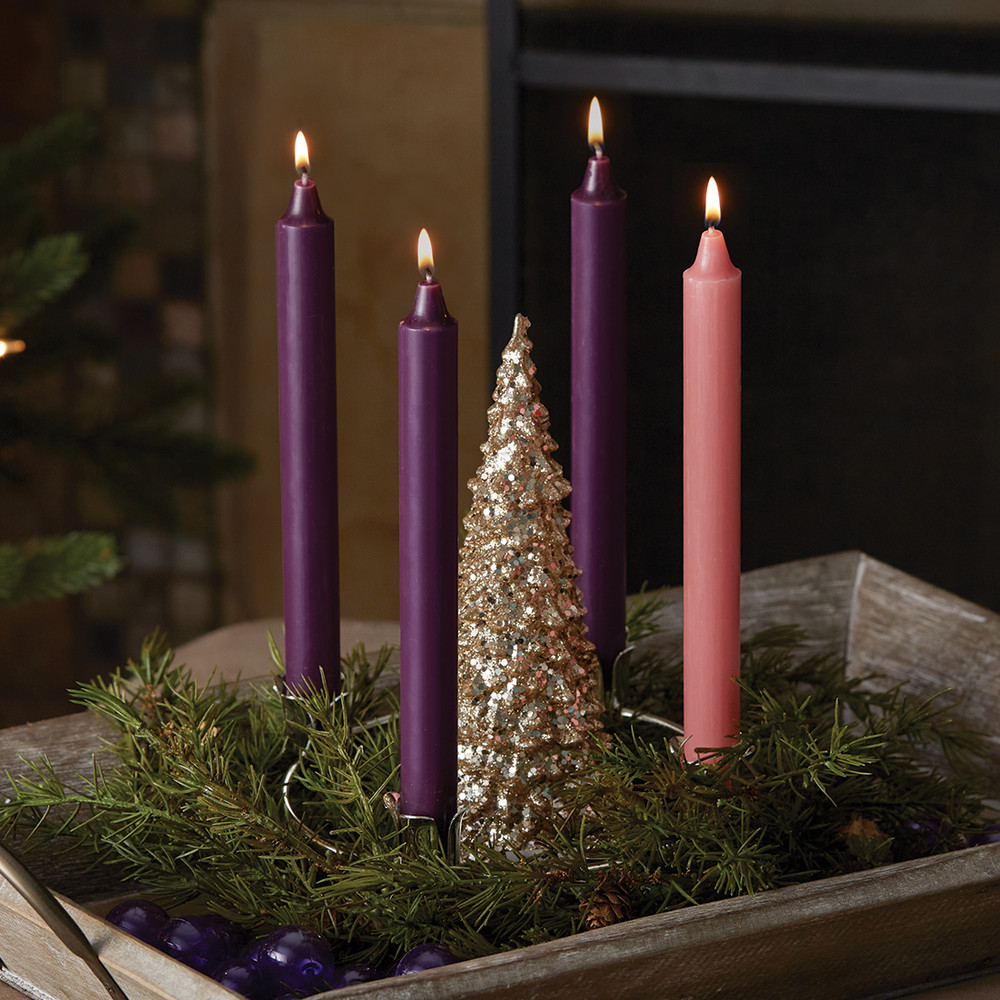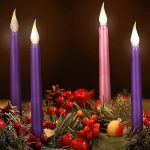Introduction to Advent and Its Traditions
The season of Advent Candles marks a time of joyful anticipation. ‘Advent’ comes from ‘adventus’, a Latin word meaning ‘arrival’. This period leads up to Christmas, where we celebrate Jesus’ birth. Families and communities across the globe participate in various traditions to prepare their hearts and homes for this festive time.
The History and Origin of Advent
Advent has roots dating back to the 4th and 5th centuries. It began as a time for prayer and fasting among new Christians. The tradition has evolved, encompassing the entire December month, leading up to Christmas. The term ‘Advent’ mirrors the Greek word ‘parousia’, translating to a ‘coming’ or ‘presence’. This season reminds us of both the birth and the eventual return of Jesus Christ.

Advent Wreaths and Candles: A Symbolic Representation
The Advent wreath is a central tradition with deep meaning. Originating in Germany around 1839, this circular wreath represents eternal life, with evergreens signifying hope amidst the winter. Candles placed on the wreath are lit each of the four Sundays before Christmas. They embody key themes of hope, faith, joy, and peace. In some families, a fifth ‘Christ Candle,’ symbolizing light and purity, is lit on Christmas to celebrate Jesus’ arrival.
The First Advent Candle: The Candle of Hope
The Candle of Hope, often the first to be lit on Advent’s first Sunday, is a beacon reminding us of the prophets’ anticipation for the Messiah. Illuminating the dark winter days, this candle’s glow symbolizes the hopeful expectation held by believers centuries ago, and calls on us to renew that anticipation today.
The Prophetic Significance of the First Candle
The first Advent candle is deeply rooted in the prophecies, particularly those of Isaiah, who spoke of the coming of Christ. It is traditionally termed the ‘Prophet’s Candle,’ underscoring hope’s pivotal role in our spiritual journey towards Christmas. Its purple hue reflects a royal lineage, awaiting the birth of the King of Kings. Lighting of the Candle of Hope initiates a season of reflection and spiritual preparation, as we await the joyous birth of Jesus.
The Second Advent Candle: The Candle of Faith
The Candles of Faith is the second light of the Advent season. It gets lit on the second Sunday. Like the first candle, it is purple, standing for preparation and penance. This candle reminds us of Mary and Joseph’s faithfulness. Their journey to Bethlehem is called to mind.
The Bethlehem Candle and Its Symbolic Meaning
The second candle, known as the Bethlehem Candle, carries rich symbolism. It honors trust and belief. This candle reflects the journey to Bethlehem, where Jesus was born. It stands for the faith leading to Jesus’ birthplace. Lighting this candle invites us to trust in God’s plan. It inspires faith in our own lives.

The Third Advent Candle: The Candle of Joy
The Candle of Joy brightens the third week of Advent.
The Symbolism of the Rose-Colored Candle
This rose-colored candle, often called the ‘Shepherd’s Candle’, brings a message of joy. It symbolizes the joy that the shepherds felt when the angels announced Jesus’ birth. It’s a softer hue, inviting joy and celebration midway through Advent. Churches and families light this candle to remember the happiness of the season and to rejoice in the coming of Christ. The pink or rose color is a break from the purple and signifies a time of rejoicing. When we light this third candle, we join in the shepherds’ joy and share it with those around us.
The Fourth Advent Candle: The Candle of Peace
As Advent progresses, the lighting of the fourth candle approaches, evoking a sense of calm anticipation. This candle, called the Candle of Peace, is traditionally purple in color, matching the tone of the season of waiting and reflection. On the fourth Sunday of Advent, the gentle glow of this candle’s flame invites us to turn our thoughts towards the tranquility and stillness that Christ’s arrival promises to the world.
The Angel’s Message and the Fourth Candle’s Significance
This candle ponders the peace heralded by the angelic announcement of Jesus’ birth. ‘Peace on Earth, goodwill toward men,’ was the precious gift brought by the newborn King, as recounted in the Gospel of Luke. Each flicker of the Candle of Peace is a small reminder of this profound message; it encourages believers to seek peace within their hearts and extend it outwards. As we light this candle, we are inspired to act as peacemakers, striving to mend bonds and foster harmony in anticipation of Christmas Day.
The Optional Fifth Advent Candle: The Christ Candle
The Christ Candle stands out in the Advent tradition. Lit on Christmas Day, it’s white, symbolizing Jesus’ purity.
The Meaning of the Christ Candle and Its Celebration
The Christ Candles reflects pure light and victory over darkness. Its lighting marks Christmas’ arrival, completing the Advent journey. Families may gather to light this candle, celebrating hope, peace, joy, and faith brought into the world by Jesus’ birth.

Advent Across Cultures and Traditions
Advent resonates around the world, with each culture adding its unique touch to the celebration. Despite the differences, the essence of Advent—with its themes of hope, faith, joy, peace, and light—remains universal.
Unique Practices and Interpretations of Advent
Every culture has special ways to honor the Advent season. From Advent wreaths adorned with candles to diverse local customs, these traditions enrich the holiday. Here is how some cultures interpret and practice Advent:
- Germany has the Advent wreath with four candles, symbolizing hope, faith, joy, and peace. They also created the first printed Advent calendar in 1908.
- In Scandinavia, homes light a candle every day in December. Churches display twenty-four candles, one for each day leading to Christmas.
- Eastern Orthodox churches observe a Nativity Fast from November 15 to December 24. It’s a time for devotion and turning their focus to God.
- Spain and Latin American countries practice ‘Posadas’. People reenact Mary and Joseph’s search for lodging from December 16 to 24.
- The Jesse tree tradition involves hanging ornaments that represent prophecies or ancestors of Jesus on a tree.
- China’s Christians light homes with paper lanterns during Advent. They might also decorate a ‘Tree of Light’ with paper chains or flowers.
- The Santa Lucia festival is celebrated in Sweden on December 13. Girls dress in white with a red sash and carry treats to their families.
These practices showcase the depth and variety of Advent traditions. Each adds layers of meaning to the season and binds communities in anticipation of Christmas.
Celebrating Advent Today: Modern Practices and Reflections
Today’s celebration of Advent has taken on new forms and maintained cherished traditions. Many families and communities keep the observance vibrant and meaningful, adapting it to fit their contemporary lives while respecting the historical essence of the season.
How Families and Communities Observe Advent
In today’s busy world, families and communities find unique ways to honor Advent. They adapt age-old customs to keep the spirit alive. Here’s how they do it:
- Daily Reflections: Some families choose to read a short verse or piece of scripture every day in December. This daily ritual focuses on the meaning of the season.
- Advent Calendars: Many use Advent calendars, counting down each day with a small treat or activity. These calendars create excitement and anticipation for children and adults alike.
- Weekly Candle Lighting: Continuing the tradition, families gather each Sunday to light an Advent candle. This act brings together hope, faith, joy, and peace, connecting them to the themes of Advent.
- Community Events: Churches and community groups host special services or events. They might feature music, prayer, or readings that reflect on Advent’s themes.
- Charitable Acts: Advent is a time of giving. Families and communities often participate in service projects or charity drives to share blessings with those less fortunate.
- Cultural Blends: In diverse neighborhoods, customs merge, and new traditions form. People might incorporate elements from different cultures into their Advent celebrations.
Advent encompasses more than just personal or religious observance; it’s a collective experience that brings joy, reflection, and unity. While methods vary, the essence of the season remains: a time of expectation and preparation for the joy of Christmas.


